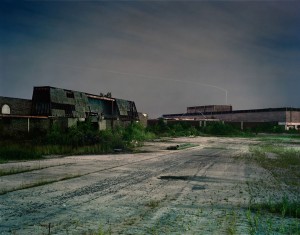by James A. Bacon
WEST PALM BEACH, FLA–Americans between the ages of 16 and 34, known collectively as the Millennial Generation, are exerting a powerful influence upon the economics of the retail industry and thus, indirectly, upon real estate development and community revitalization. That was the message I got from a presentation by Kennedy Smith, principal of the Community Land Use and Economics Group, in a presentation today at the Congress for the New Urbanism.
Millennials aren’t as interested as their parents are in buying a lot of stuff and accumulating possessions, Smith said. They are more likely to purchase used products or acquire products that last a long time. They are more likely to rent before they buy. Perhaps most significantly, they place a higher value on the shopping experience. They like to know the story behind the product — where the potatoes in Lay’s Potato Chips were grown, for instance. And they prefer unique, authentic and locally owned places over cookie-cutter chain stores.
The changing tastes of this massive generational cohort, which at 80 million strong is as large as the Baby Boomer generation, adds to the woes of the retail sector, which is reeling from the collapse of credit-fueled growth in consumer spending, increased competition from Internet-based retailers and the new possibilities created by the rise of social media.
“We have to unlearn what we’ve learned about the way retail works,” Smith said. Phenomena like smart phone-powered flash mobs and geotagging, which allows people to append photographs and commentary to a geographical location found on Google Maps, are changing the rules of the game. There still will be a role for traditional “destination” retail and for “convenience” retail but that role will be diminished. Social and technological trends appear to be shifting in favor of nimble, entrepreneurial retailers who can offer place-based experiences impossible to replicate in chain stores and who utilize social media to build loyalty with customers.
Mall occupancy is declining, and Smith does not see the trend reversing. The United States is the most over-retailed country in the world to begin with, and the big chain stores that anchor malls and shopping centers are swimming upstream against negative market trends. The big retail chains will shrink. Big box stores will shift to smaller footprints. Retailers will seek to develop new distribution channels, making greater use of everything from vending machines to Internet fulfillment. Smith said that 25% to 30% of the nation’s shopping centers will be re-purposed.
So, what does that mean for the evolution of human settlement patterns? Smith did not speculate. But basic conclusions seem evident enough. The retail sector, a key driver of real estate development, may experience development activity in high-growth metro areas or in localized re-development projects but it will suffer prolonged contraction overall. Virginia will see more ghost malls and phantom shopping centers, and local governments will lose a major source of sales and property tax revenue.
While stock holders in large retail chains may take a beating, the trends augur well for home-grown entrepreneurs. For decades, the economies of scale favored giant retailers who could conduct national advertising campaigns and build hyper-efficient supply chains. The Wal Marts, the Targets and the Best Buys drove tens of thousands of mom-and-pop stores out of business. But one thing the chains cannot mass produce is the authenticity derived from strong local roots and sense of place. Neither are chains well equipped to build the same personal bonds with customers.
Local government practitioners need to master new best practices for growing a vibrant retail sector. Once upon a time, all it took was working with developers to open new malls and shopping centers. The critical new skill set will be knowing how to develop a strong sense of “place” — unique locations with strong local roots, authenticity, character and charm. By their nature, these places cannot be mass produced. They can only be grown organically, nurtured by the shared passion of many small businesses and individual property owners. Local governments can’t force feed these places but they can help by creating attractive, walkable streetscapes and providing supporting services such as parking, mass transit and/or law enforcement.
Local governments that crack the code early in the game will prosper. Those that are slow to get the message will flounder.



